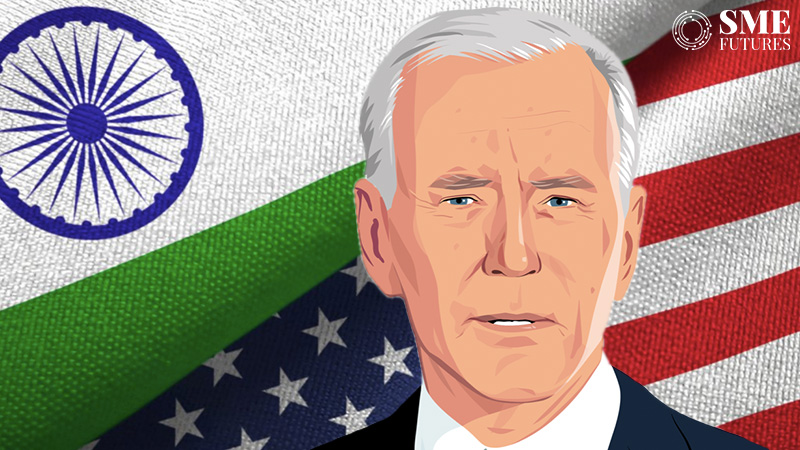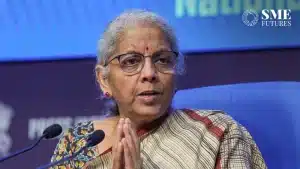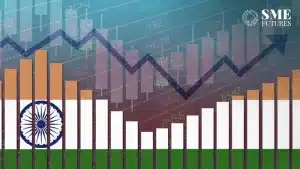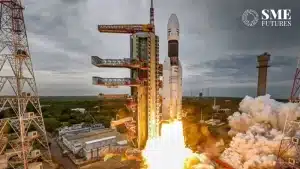Despite a recent change in leadership, the economic and strategic ties of US with India are expected to retain the current momentum. The change of guard may infer a less acrimonious approach of US towards trade relations, but it does not indicate a drastic shift in US strategic priorities and willingness to become flexible on long-standing contentious points between two countries. This includes nuclear deal, dairy products, and intellectual property rights.
Till now, Joe Biden has always been an avid supporter of India. As a senator and as the chairman of the Senate Foreign Relation Committee, he wrote a letter to President George W. Bush to drop the US sanctions against India. He also worked on US Senate’s approval for US-India Civil Nuclear Agreement in 2008. India-US relations flourished more while Biden was a vice president in Barack Obama’s reign for two terms.
In his very first interaction with Prime Minister Narendra Modi, Biden talked about strengthening and expanding relations between both countries. While the Indo-US relations have thrived under both Republicans and Democrats, India is keenly looking forward for steps taken by his administration. Therefore, US presidency election was of great interest to world especially India. However, think-tanks, analysts, and industry experts are positive about possible strategic and economical measures by Biden’s administration.
Rick Rossow from the Centre for Strategic and International Studies, a think tank says, “I expect most positive areas of cooperation, notably defence to be maintained,” According to him, two key issues could really define the US-India ties. He adds, “First of all, how will the Biden administration handle potential sanctions on India over Russian defence purchases? Secondly, will US raising concerns about social issues in India create a wedge between both countries?”
Due to cross-border tensions, India wants to procure S-400 missile defence system and other arms from Russia. It now hopes to get a waiver from US for this purchase. Only last month, US had cautioned India against the procurement. Under the US federal law Countering America’s Adversaries through Sanction Act (CAATSA), the country can impose sanctions against countries that engage in defense and intelligence transactions with Iran, North Korea, and Russia.
Russow also opined that under Biden administration, India will face less pressure over ties with Iran and renewable energy cooperation will be highlighted. However, trade tensions between the countries according to him will persist. “Without a doubt, Joe Biden will continue strengthening the US-India relationship.” Speaking on this, Ashley J Tellis, Tata Chair for Strategic Affairs at the Carnegie Endowment for International Peace says, “He will have his hands full. Overcoming problems at home and restoring American leadership abroad.”
President of the Indian American Public Affairs Committee, Jagdish Sehwani believes that he is confident about Indo-US relations reaching to new heights under Biden reign. He says, “Indian American community which is 4.5 million strong in USA will play an important role. The second thing is the economic relationship, which should reach up to US$ 1 trillion in the next decade.”
Meanwhile, India Inc also expects that India-US relations will get strengthened in areas such as defence, trade, energy, climate crisis, global health crisis, and immigration policy. A policy paper released by the Biden Campaign gives insights about how Biden is going to achieve this. According to this paper, Biden will deliver on his long-standing belief that India and the US are natural partners.
It further states that Biden administration will place a high priority on continuing to strengthen the US-India relationship. “No common global challenge can be solved without India and the US working as responsible partners. Together, we will continue strengthening India’s defense and capabilities as a counter-terrorism partner, improving health systems and pandemic response, and deepening cooperation in areas such as higher education, space exploration, and humanitarian relief,” it states.
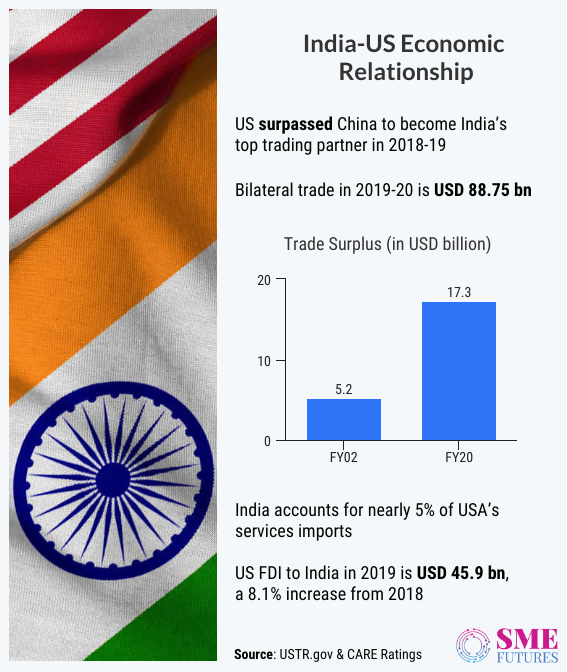
Paving way for permanent UNSC membership
There has been growing demand to increase the number of permanent members of United Nations Security Council (UNSC) to reflect the contemporary global reality. India, Brazil, South Africa, Germany and Japan are strong contenders for permanent membership of the UNSC which has the primary responsibility for the maintenance of international peace and security.
But despite being a founder member of the council, a largest democracy, and fifth largest economy India has not able to grab a permanent seat yet. It was in Biden’s vice-presidency term when USA officially supported India’s permanent membership in the council. India’s bid for permanent membership as of now is backed by four out of five permanent members namely France, Russia, UK and USA.
Only China that possesses veto power still hasn’t agreed on India’s efforts. According to the rules, any reform requires veto votes of all permanent members in UNSC. India has a non-permanent seat in UN Security Council for eight terms (ongoing 16 years). The most recent among this is 2021-22 term, but India has been demanding a permanent membership for long. Experts believe India should now become a permanent member at UNSC.
According to minister of State for External Affairs V Muraleedharan, India in collaboration with other pro-reform countries has been consistently making efforts to build support among the UN member states for the expansion of UNSC. While India is actively engaged in inter-governmental negotiation (IGN) process of the UN alongside other reform-oriented countries, it will be interesting to watch how Biden administration can help India in this pursuit.
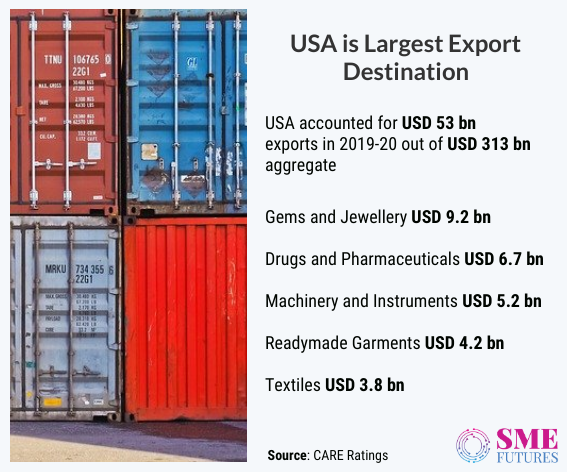
India Inc looks forward to improve Indo-US ties
India is on its way to become a $5 trillion economy. USA is already its largest trade partner. With arrival of Joe Biden, Indian industry hopes that bilateral economic ties between India and the US will attain new heights. In last two decades, India always had a trade surplus with USA. As per the analysis of CARE Ratings, the trade surplus has widened from $5.2 billion in FY02 to $17.3 billion in FY20. The trade surplus had peaked at $21.2 billion in FY18 and has moderated to some extent.
Purnachandra Rao Surapaneni, National President of Indo-American Chamber of Commerce (IACC) sheds light on Indo-US trade relations and tells that it dates back to 1980s. According to him, the trade with US was merely US$ 4 billion in 1986. It went up to US$ 32 billion by 2006. That was a dramatic increase of eight fold. But in 2019, exports from India were at US$ 58 billion and imports were about US$ 34 billion.
He elaborates, “India-US partnership is often described as relationship of the 21st century because of the nature of their democracies. India has become an important trading partner of USA in over past two decades. The partnerships definitely have strategic importance for advancing common interest, regionally and globally. We can see that the regular exchange of high level political debates is providing sustainable momentum to bilateral cooperation, latest being the 2+2 dialogue.”
Uday Kotak, President, CII in a statement has said, “With rising trade and investment ties between the two countries, the health of our economies are inextricably linked and we must work together during this critical time to reinvigorate the bilateral economic agenda facilitating economic growth, enhancing job creation, supporting small business, and enabling cooperation in investment-related movement of professionals.”
Kamal Vora, Vice-President, Indo American Chamber of Commerce (IACC) is keenly observing developments with changing administration and admits that this could be a time for immense opportunities for both countries. Also speculating on the key issues Vora adds, “Question is will USA’s stated protectionist policies of recent times come in its way to capitalize on this huge opportunity or will USA choose to benefit from this? Businesses on both sides are waiting with hopes and aspirations for greater partnership.”
According to CARE Ratings analysis, the primary areas of difference with US is about trade-wars which if resolved can be mutually beneficial. United States also argues that India has used tariff and non-tariff barriers to protect domestic agriculture and related industries. India on the other hand believes that the USA maintains anti-competitive practices and has imposed steel and aluminum tariffs unilaterally along with non-competitive subsidies.
USA had also announced in 2019 that it would officially revoke India’s GSP status. This meant that around $5 -5.5 billion worth of exports to the United States would have been affected in the areas such as textiles, agricultural products, pharma and automotive parts. Recently, the Commerce and Industry minister indicated the possibility of a trade deal between both countries.
India is the fastest growing economy with rising middle class. This can make it increasingly attractive for US exporters. On this, Surapaneni claims, “The US can’t ignore India in any sense. President-elect Joe Biden believes that there is lot of scope in bilateral trade, when he travelled to India in 2013 as the vice president. The goal of taking bilateral trade to US$ 500 billion is a herculean task when compared to the current status. But, it can be achieved if Biden can resolve certain issues and endorse already solid ties of Indo-US partnership.”
Prior to the economic disruption caused by COVID-19, bilateral trade in goods and services in 2019 reached a peak of nearly $150 billion. The trade experts hope that it will continue to rise in the years to come.
Triangular equation of India, China, and US
World is witnessing friction between the relationship of US and China. Banning of Huawei, closure of US consulate in Chengdu, spying allegations and escalating anti-China rhetoric regulates some of policy changes among friend countries of both nations. Trump government has also been extremely vocal about India’s support on Indo-China standoff and India expects a similar support from Biden. Still, it is too early to depict that how Biden administration will handle the quandary of this relationship.
A detailed policy paper by US state department highlights that China is compromising the security, autonomy, and economic interests of many nations in the region. “China perceives rising India as a rival and seeks to impel it to accommodate Beijing’s ambitions by engaging economically while constraining New Delhi’s strategic partnership with the US, Japan, Australia and its relations with other democracies,” states the state department report.
The report further states that China seeks to diminish US influence by fostering a sense in the region’s nations that China’s dominance is inevitable. “Prime targets include US treaty-based allies Japan, South Korea, Australia, Thailand, and the Philippines - as well as emerging strategic partners such as India, Vietnam, Indonesia, and Taiwan,” the report further states.
“In the face of the China challenge, the US must secure freedom,” suggests the report. So, does it mean India will benefit from sino-US trade conflicts? Experts feel that efforts to relocate supply chain from China can open more FDI inputs. Due to difficulties caused by COVID-19 outbreak and extension of China-US trade war has pushed American companies to consider India as an alternative in place of China.
Sanjay Aggarwal, President of PHD Chamber of Commerce opines that it has to be a combined effort from government and the industries to make success out of this opportunity. Speaking on India as exporter, he says, “For this, India should make sure that industries are given adequate credits and are supported in various ways. For instance, a study suggests India is at 7 to 8 per cent disadvantage on the basis of our logistics cost compared to China and other countries. So, there is plenty of room for putting strong export incentives.”
“From committing investments to setting up establishments for manufacturing units in India and then reselling manufactured products into the US market or fulfilling Indian demand is yet to happen. The coming few months will only tell whether this will happen or not. We are seeing progress with Apple and other big players committing investments in IT sector.”
Aseem Chawla, past regional President at IACC.
On the other side, Trump’s announcement of making America a manufacturing superpower has set a tone of America first and Biden’s new slogan of Buy American can make it difficult for India.

Expectation of IT sector with the new administration
US is the biggest market for the Indian IT sector, accounting for a lion’s share of the industry’s revenue. NASSCOM, an apex industry body has projected a revenue growth of 7.7 per cent at US$ 191 billion for IT sector in the ongoing fiscal.
The industry has added a net two lakh jobs, taking the overall workforce to 4.36 million Indian IT players keeping a close watch on Biden’s approach and policies related to H-1B work visas. These are used by a large number of Indian technology professionals. In June, US President Donald Trump banned the entry of workers in US through several key non-immigrant visa categories, including H-1B, until end of the year.
Those affected include the family members of the H-1B, L-1, and certain categories of J1 visas. Later, the Trump administration announced certain exemptions in H-1B and L-1 travel bans for those who chose to continue employment with the same employer. This move could help Indian IT professionals and those working in the healthcare sector.
The H-1B visa is a non-immigrant visa that allows US companies to employ foreign workers in specialty occupations that require theoretical or technical expertise. Companies are highly dependent on it to hire thousands of employees each year from countries like India and China. In a statement, Nasscom said a key challenge that the sector faces is the lack of required Science, Technology, Engineering and Mathematics (STEM) talent in US.
This clearly highlights the high degree of overall unemployment on one hand, and more than half a million job vacant in software related jobs on the other. “Nasscom looks forward to working together with the new US Administration, to find solutions to the STEM skills gap, and enable America to become more competitive,” the statement added.
Donald Trump has been an unconventional president, while the accession of Biden can mean the return of old systems.
However, there is no interference on issues like minorities or democracy which were considered by the Trump administration as internal affairs, may not be the case with Biden administration. India-US partnership improved in Trump’s presidency, 2+2 dialogue, and Namaste Trump. It would still be interesting to watch out how Indo-US relations will progress. US as India’s largest trading partner would also be willing to do healthy trade to support smooth functioning of both economies and geopolitics.

